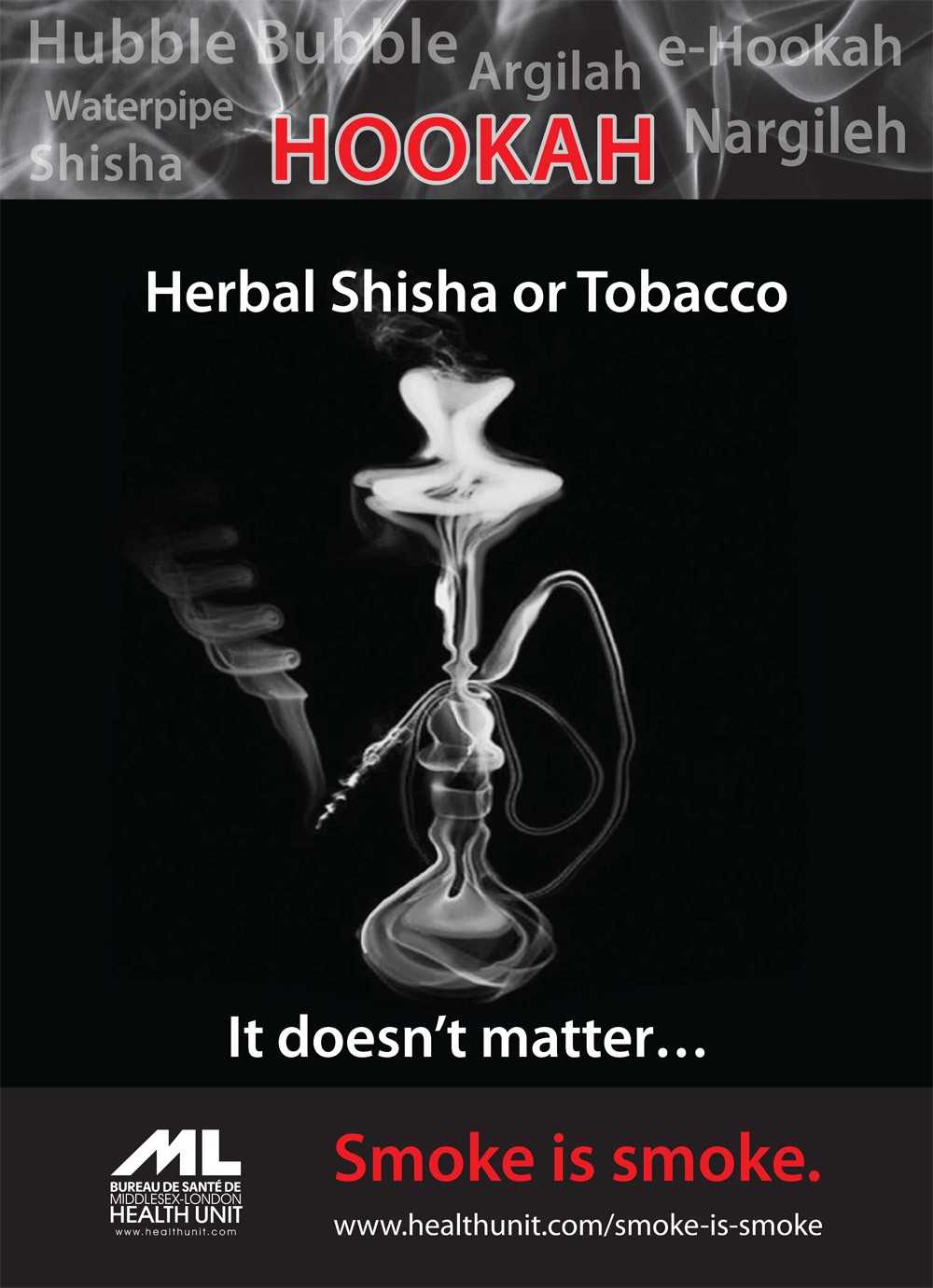What is Shisha?
Shisha is a blend of moist tobacco OR herbs, preservatives and flavourings held together with molasses or honey.2 Shisha is available in many flavours such as apple, plum, coconut, mango, banana, licorice, lemon, orange, tutti fruity etc.2 5 9
It is hard to know the exact amounts of the ingredients contained in a shisha package for several reasons:2 3 There is no standard labeling. Exact ingredients are often not labeled clearly, sometimes it indicates that there are ‘herbs’ but doesn’t say what those herbs are, and it doesn’t always state the amount of nicotine. Some packages have labeling in a foreign language. Even if packages do have labeling, some retailers will take shisha out of the original package and place in tupperware containers that have no labeling. Also, some waterpipe cafes prepare their own shisha mixtures.
 Smoke is Smoke - Hookah (PDF 1.2MB)
Smoke is Smoke - Hookah (PDF 1.2MB)